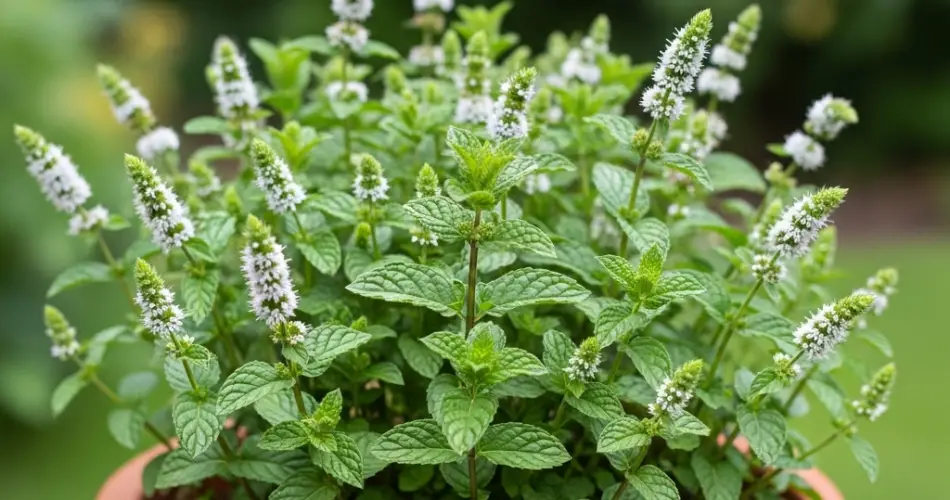Mint is one of the easiest and most rewarding herbs to grow at home, even for people who’ve never picked up a trowel. Its vibrant aroma, refreshing flavor, and rapid growth make it a favorite among beginner gardeners. Whether you have a backyard, a sunny balcony, or just a windowsill, mint can thrive with minimal effort.
This guide walks you through the process of growing mint from scratch without the need for specialized knowledge, expensive tools, or gardening experience.
Why Grow Mint?
Mint is a versatile herb used in teas, sauces, salads, desserts, and even natural remedies. It’s known for aiding digestion, reducing stress, and adding a refreshing taste to drinks. Beyond culinary uses, mint also serves as a natural insect repellent, making it a handy addition to your garden or indoor space.
What makes mint especially appealing to new gardeners is its resilience. Mint grows quickly, spreads vigorously, and recovers well even if neglected occasionally.
Step 1: Choose the Right Variety
There are several types of mint, including spearmint, peppermint, chocolate mint, and apple mint. For beginners, spearmint is a good choice because it’s hardy, easy to grow, and has a classic mint flavor that’s perfect for most dishes and drinks.
You can start with a young mint plant from a garden center or propagate it from cuttings, which is explained below.
Step 2: Find a Suitable Growing Space
Mint can be grown in the ground, but it’s best planted in containers—especially for beginners. This herb spreads aggressively and can overtake other plants if left unchecked. A pot allows you to control its growth and move it around for better sunlight exposure.
Choose a medium to large pot with drainage holes to prevent waterlogging. Mint loves moist, well-drained soil, so use standard potting soil and mix in a bit of compost if you have it.
Mint prefers partial shade to full sun. A spot with 3–6 hours of sunlight a day is ideal. If growing indoors, place the pot on a sunny windowsill.
Step 3: Planting Mint
If starting from a nursery plant, gently remove it from its container, loosen the roots, and plant it in your chosen pot at the same depth it was growing before.
To grow mint from a cutting:
-
Cut a healthy mint stem about 4–6 inches long, just below a leaf node.
-
Remove the leaves from the lower half.
-
Place the cutting in a glass of water and put it in a well-lit area.
-
After a week or two, roots will begin to form. Once they’re about 1–2 inches long, plant the cutting in soil.
Water well after planting.
Step 4: Caring for Your Mint
Mint is not demanding, but a few basic care steps will help it thrive:
-
Watering: Keep the soil consistently moist but not soggy. Water when the top inch of soil feels dry to the touch.
-
Feeding: Mint doesn’t require heavy fertilization. A light feeding of compost or diluted organic liquid fertilizer every 4–6 weeks is sufficient.
-
Pruning: Regularly pinch off the tips of the stems to encourage bushier growth. Remove any flower buds to keep the plant focused on producing flavorful leaves.
If your mint gets leggy (tall with fewer leaves), trim it back by one-third. It will regrow fuller and stronger.
Step 5: Harvesting Mint
You can begin harvesting mint once the plant is about 6 inches tall. Simply snip a few sprigs from the top using scissors or your fingers. Never take more than one-third of the plant at a time—this allows it to keep growing healthily.
The best time to harvest is in the morning, just after the dew has dried. This is when the oils in the leaves are most concentrated.
Step 6: Storing and Using Mint
Fresh mint can be used immediately or stored:
-
In the refrigerator, place stems in a glass of water like flowers, or wrap in a damp paper towel and seal in a bag.
-
For longer storage, mint leaves can be dried or frozen.
Use fresh mint in teas, lemonade, cocktails, yogurt, or as a garnish for desserts and savory dishes.
Bonus Tip: Keep Mint Going All Year
If you live in a colder climate, bring the mint pot indoors before the first frost. Place it in a sunny window and continue to water it as usual. Mint will slow down in winter but bounce back in spring with proper care.
Final Thoughts
Growing mint at home is simple, fast, and satisfying—perfect for those with no gardening background. With just a little attention, you’ll enjoy a constant supply of fresh, aromatic mint all year long.
Once you’ve mastered mint, you may find yourself eager to try growing other easy herbs like basil, parsley, or oregano. But for now, sit back, sip a glass of homemade mint tea, and enjoy the success of your first herb garden.



